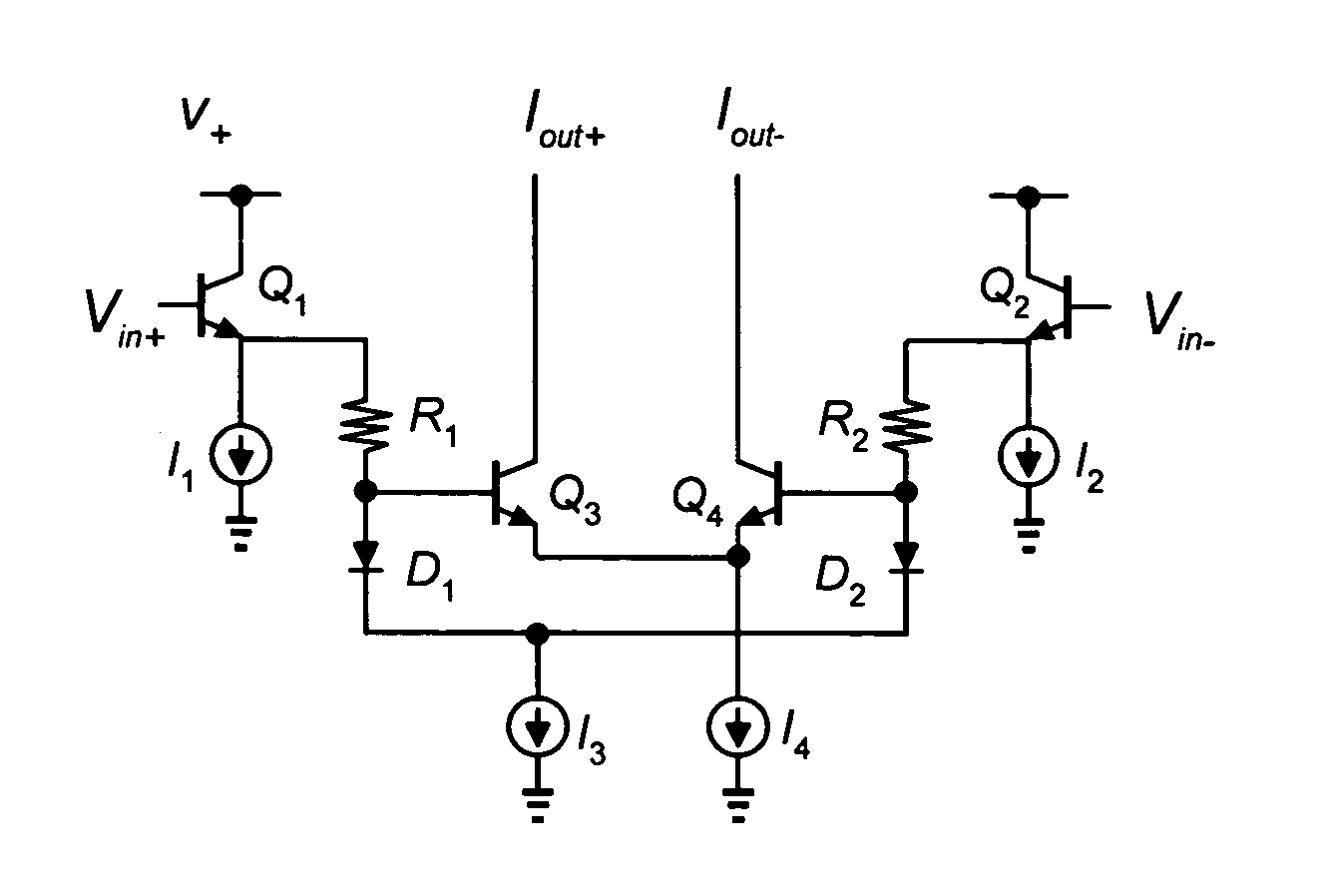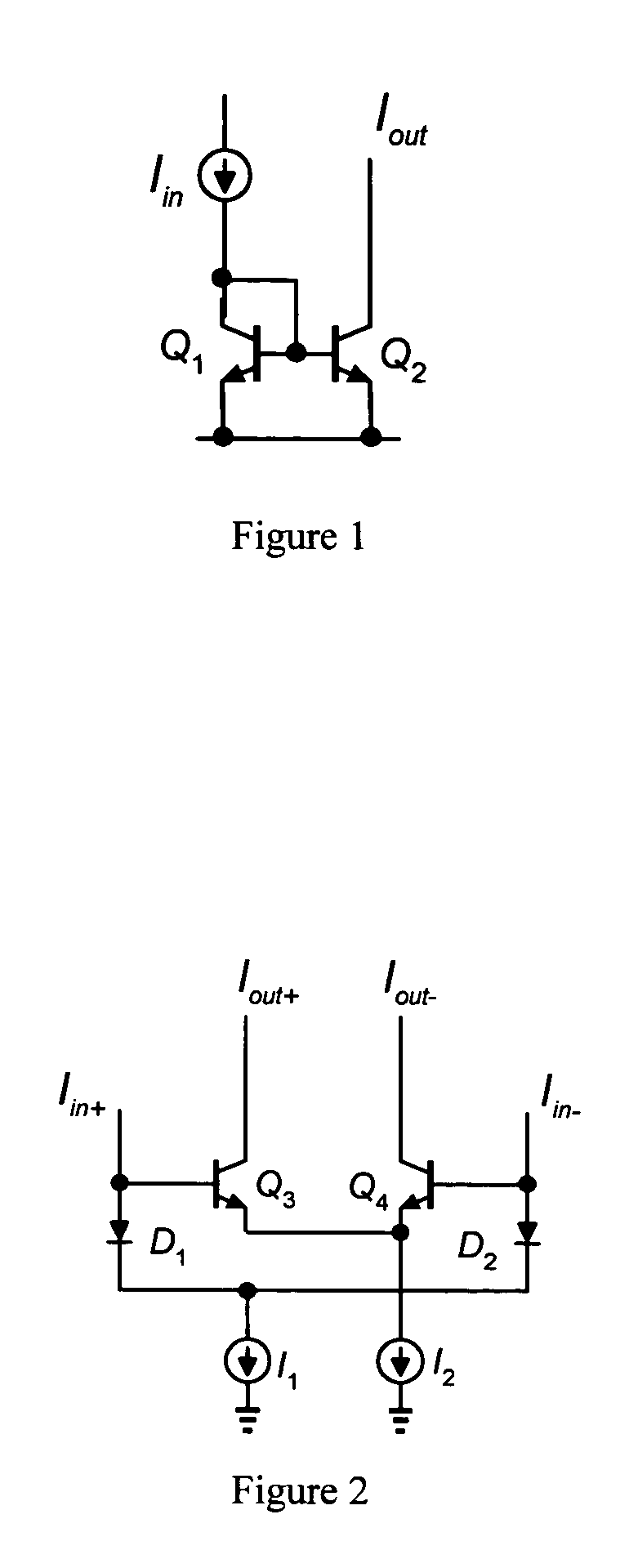Translinear variable gain amplifier
a variable gain amplifier and translinear technology, applied in differential amplifiers, amplifiers with semiconductor devices/discharge tubes, power conversion systems, etc., can solve the problems of reducing system capacity, high bias current in vga and other circuits, unwanted attributes of portable devices, etc., to achieve wide control range, facilitate broadband operation, and cascade easily
- Summary
- Abstract
- Description
- Claims
- Application Information
AI Technical Summary
Benefits of technology
Problems solved by technology
Method used
Image
Examples
Embodiment Construction
[0017]FIG. 1 shows a current mirror circuit that utilizes the translinear principle. In this circuit, the input current Iin flows through transistor Q1 and develops a base-emitter voltage (VBE1) given by VBE 1=VTln(IinIS 1)
where VT is the thermal voltage and IS1 is the saturation current of transistor Q1. The base-emitter voltage of transistor Q1 is impressed upon or “mirrored” to the base-emitter junction of transistor Q2, producing an output current Iout equal to: Iout=IS 2exp(VBE 2VT)
Rearranging these equations yields the following translinear relationship:
JQ1=JQ2
where the current densities (J) of the transistors are JQ 1=IinAe(Q 1) and JQ 2=IoutAe(Q 2),
with
the emitter area (Ae) of each transistor proportional to the saturation current (IS).
[0018]FIG. 2 shows a current gain cell that also utilizes the translinear principle. In this circuit, the input currents Iin+ and Iin− develop the following diode voltages: VD 1=VTln(Iin+IS) VD 2=...
PUM
 Login to View More
Login to View More Abstract
Description
Claims
Application Information
 Login to View More
Login to View More - R&D
- Intellectual Property
- Life Sciences
- Materials
- Tech Scout
- Unparalleled Data Quality
- Higher Quality Content
- 60% Fewer Hallucinations
Browse by: Latest US Patents, China's latest patents, Technical Efficacy Thesaurus, Application Domain, Technology Topic, Popular Technical Reports.
© 2025 PatSnap. All rights reserved.Legal|Privacy policy|Modern Slavery Act Transparency Statement|Sitemap|About US| Contact US: help@patsnap.com



